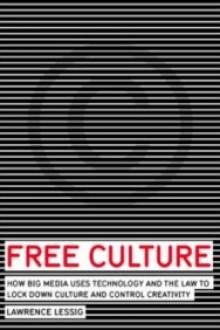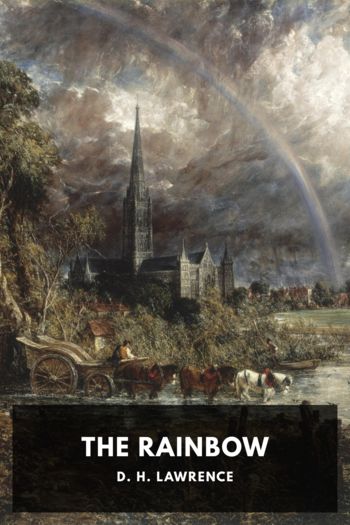Free Culture by Lawrence Lessig (short story to read .TXT) 📕

- Author: Lawrence Lessig
- Performer: 0143034650
Book online «Free Culture by Lawrence Lessig (short story to read .TXT) 📕». Author Lawrence Lessig
9. Although 13,000 titles were published in the United States from 1790 to 1799, only 556 copyright registrations were filed; John Tebbel, A History of Book Publishing in the United States, vol. 1, The Creation of an Industry, 1630-1865 (New York: Bowker, 1972), 141. Of the 21,000 imprints recorded before 1790, only twelve were copyrighted under the 1790 act; William J. Maher, Copyright Term, Retrospective Extension and the Copyright Law of 1790 in Historical Context, 7-10 (2002), available at link #25. Thus, the overwhelming majority of works fell immediately into the public domain. Even those works that were copyrighted fell into the public domain quickly, because the term of copyright was short. The initial term of copyright was fourteen years, with the option of renewal for an additional fourteen years. Copyright Act of May 31, 1790, §1, 1 stat. 124.
10. Few copyright holders ever chose to renew their copyrights. For instance, of the 25,006 copyrights registered in 1883, only 894 were renewed in 1910. For a year-by-year analysis of copyright renewal rates, see Barbara A. Ringer, "Study No. 31: Renewal of Copyright," Studies on Copyright, vol. 1 (New York: Practicing Law Institute, 1963), 618. For a more recent and comprehensive analysis, see William M. Landes and Richard A. Posner, "Indefinitely Renewable Copyright," University of Chicago Law Review 70 (2003): 471, 498-501, and accompanying figures.
11. See Ringer, ch. 9, n. 2.
12. These statistics are understated. Between the years 1910 and 1962 (the first year the renewal term was extended), the average term was never more than thirty-two years, and averaged thirty years. See Landes and Posner, "Indefinitely Renewable Copyright," loc. cit.
13. See Thomas Bender and David Sampliner, "Poets, Pirates, and the Creation of American Literature," 29 New York University Journal of International Law and Politics 255 (1997), and James Gilraeth, ed., Federal Copyright Records, 1790-1800 (U.S. G.P.O., 1987).
14. Jonathan Zittrain, "The Copyright Cage," Legal Affairs, July/August 2003, available at link #26.
15. Professor Rubenfeld has presented a powerful constitutional argument about the difference that copyright law should draw (from the perspective of the First Amendment) between mere "copies" and derivative works. See Jed Rubenfeld, "The Freedom of Imagination: Copyright's Constitutionality," Yale Law Journal 112 (2002): 1-60 (see especially pp. 53-59).
16. This is a simplification of the law, but not much of one. The law certainly regulates more than "copies"--a public performance of a copyrighted song, for example, is regulated even though performance per se doesn't make a copy; 17 United States Code, section 106(4). And it certainly sometimes doesn't regulate a "copy"; 17 United States Code, section 112(a). But the presumption under the existing law (which regulates "copies;" 17 United States Code, section 102) is that if there is a copy, there is a right.
17. Thus, my argument is not that in each place that copyright law extends, we should repeal it. It is instead that we should have a good argument for its extending where it does, and should not determine its reach on the basis of arbitrary and automatic changes caused by technology.
18. I don't mean "nature" in the sense that it couldn't be different, but rather that its present instantiation entails a copy. Optical networks need not make copies of content they transmit, and a digital network could be designed to delete anything it copies so that the same number of copies remain.
19. See David Lange, "Recognizing the Public Domain," Law and Contemporary Problems 44 (1981): 172-73.
20. Ibid. See also Vaidhyanathan, Copyrights and Copywrongs, 1-3.
21. In principle, a contract might impose a requirement on me. I might, for example, buy a book from you that includes a contract that says I will read it only three times, or that I promise to read it three times. But that obligation (and the limits for creating that obligation) would come from the contract, not from copyright law, and the obligations of contract would not necessarily pass to anyone who subsequently acquired the book.
22. See Pamela Samuelson, "Anticircumvention Rules: Threat to Science," Science 293 (2001): 2028; Brendan I. Koerner, "Play Dead: Sony Muzzles the Techies Who Teach a Robot Dog New Tricks," American Prospect, 1 January 2002; "Court Dismisses Computer Scientists' Challenge to DMCA," Intellectual Property Litigation Reporter, 11 December 2001; Bill Holland, "Copyright Act Raising Free-Speech Concerns," Billboard, 26 May 2001; Janelle Brown, "Is the RIAA Running Scared?" Salon.com, 26 April 2001; Electronic Frontier Foundation, "Frequently Asked Questions about Felten and USENIX v. RIAA Legal Case," available at link #27.
23. Sony Corporation of America v. Universal City Studios, Inc., 464 U.S. 417, 455 fn. 27 (1984). Rogers never changed his view about the VCR. See James Lardner, Fast Forward: Hollywood, the Japanese, and the Onslaught of the VCR (New York: W. W. Norton, 1987), 270-71.
24. For an early and prescient analysis, see Rebecca Tushnet, "Legal Fictions, Copyright, Fan Fiction, and a New Common Law," Loyola of Los Angeles Entertainment Law Journal 17 (1997): 651.
25. FCC Oversight: Hearing Before the Senate Commerce, Science and Transportation Committee, 108th Cong., 1st sess. (22 May 2003) (statement of Senator John McCain).
26. Lynette Holloway, "Despite a Marketing Blitz, CD Sales Continue to Slide," New York Times, 23 December 2002.
27. Molly Ivins, "Media Consolidation Must Be Stopped," Charleston Gazette, 31 May 2003.
28. James Fallows, "The Age of Murdoch," Atlantic Monthly (September 2003): 89.
29. Leonard Hill, "The Axis of Access," remarks before Weidenbaum Center Forum, "Entertainment Economics: The Movie Industry," St. Louis, Missouri, 3 April 2003 (transcript of prepared remarks available at link #28; for the Lear story, not included in the prepared remarks, see link #29).
30. NewsCorp./DirecTV Merger and Media Consolidation: Hearings on Media Ownership Before the Senate Commerce Committee, 108th Cong., 1st sess. (2003) (testimony of Gene Kimmelman on behalf of Consumers Union and the Consumer Federation of America), available at link #30. Kimmelman quotes Victoria Riskin, president of Writers Guild of America, West, in her Remarks at FCC En Banc Hearing, Richmond, Virginia, 27 February 2003.
31. Ibid.
32. "Barry Diller Takes on Media Deregulation," Now with Bill Moyers, Bill Moyers, 25 April 2003, edited transcript available at link #31.
33. Clayton M. Christensen, The Innovator's Dilemma: The Revolutionary National Bestseller that Changed the Way We Do Business (Cambridge: Harvard Business School Press, 1997). Christensen acknowledges that the idea was first suggested by Dean Kim Clark. See Kim B. Clark, "The Interaction of Design Hierarchies and Market Concepts in Technological Evolution," Research Policy 14 (1985): 235-51. For a more recent study, see Richard Foster and Sarah Kaplan, Creative Destruction: Why Companies That Are Built to Last Underperform the Market--and How to Successfully Transform Them (New York: Currency/Doubleday, 2001).
34. The Marijuana Policy Project, in February 2003, sought to place ads that directly responded to the Nick and Norm series on stations within the Washington, D.C., area. Comcast rejected the ads as "against [their] policy." The local NBC affiliate, WRC, rejected the ads without reviewing them. The local ABC affiliate, WJOA, originally agreed to run the ads and accepted payment to do so, but later decided not to run the ads and returned the collected fees. Interview with Neal Levine, 15 October 2003.
These restrictions are, of course, not limited to drug policy. See, for example, Nat Ives, "On the Issue of an Iraq War, Advocacy Ads Meet with Rejection from TV Networks," New York Times, 13 March 2003, C4. Outside of election-related air time there is very little that the FCC or the courts are willing to do to even the playing field. For a general overview, see Rhonda Brown, "Ad Hoc Access: The Regulation of Editorial Advertising on Television and Radio," Yale Law and Policy Review 6 (1988): 449-79, and for a more recent summary of the stance of the FCC and the courts, see Radio-Television News Directors Association v. FCC, 184 F. 3d 872 (D.C. Cir. 1999). Municipal authorities exercise the same authority as the networks. In a recent example from San Francisco, the San Francisco transit authority rejected an ad that criticized its Muni diesel buses. Phillip Matier and Andrew Ross, "Antidiesel Group Fuming After Muni Rejects Ad," SFGate.com, 16 June 2003, available at link #32. The ground was that the criticism was "too controversial."
35. Siva Vaidhyanathan captures a similar point in his "four surrenders" of copyright law in the digital age. See Vaidhyanathan, 159-60.
36. It was the single most important contribution of the legal realist movement to demonstrate that all property rights are always crafted to balance public and private interests. See Thomas C. Grey, "The Disintegration of Property," in Nomos XXII: Property, J. Roland Pennock and John W. Chapman, eds. (New York: New York University Press, 1980).
CHAPTER ELEVEN: CHIMERA
1. H. G. Wells, "The Country of the Blind" (1904, 1911). See H. G. Wells, The Country of the Blind and Other Stories, Michael Sherborne, ed. (New York: Oxford University Press, 1996).
2. For an excellent summary, see the report prepared by GartnerG2 and the Berkman Center for Internet and Society at Harvard Law School, "Copy- right and Digital Media in a Post-Napster World," 27 June 2003, available at link #33. Reps. John Conyers Jr. (D-Mich.) and Howard L. Berman (D-Calif.) have introduced a bill that would treat unauthorized on-line copying as a felony offense with punishments ranging as high as five years imprisonment; see Jon Healey, "House Bill Aims to Up Stakes on Piracy," Los Angeles Times, 17 July 2003, available at link #34. Civil penalties are currently set at $150,000 per copied song. For a recent (and unsuccessful) legal challenge to the RIAA's demand that an ISP reveal the identity of a user accused of sharing more than 600 songs through a family computer, see RIAA v. Verizon Internet Services (In re. Verizon Internet Services), 240 F. Supp. 2d 24 (D.D.C. 2003). Such a user could face liability ranging as high as $90 million. Such astronomical figures furnish the RIAA with a powerful arsenal in its prosecution of file sharers. Settlements ranging from $12,000 to $17,500 for four students accused of heavy file sharing on university networks must have seemed a mere pittance next to the $98 billion the RIAA could seek should the matter proceed to court. See Elizabeth Young, "Downloading Could Lead to Fines," redandblack.com, 26 August 2003, available at link #35. For an example of the RIAA's targeting of student file sharing, and of the subpoenas issued to universities to reveal student file-sharer identities, see James Collins, "RIAA Steps Up Bid to Force BC, MIT to Name Students," Boston Globe, 8 August 2003, D3, available at link #36.
3. WIPO and the DMCA One Year Later: Assessing Consumer Access to Digital Entertainment on the Internet and Other Media: Hearing Before the Subcommittee on Telecommunications, Trade, and Consumer Protection, House Committee on Commerce, 106th Cong. 29 (1999) (statement of Peter Harter, vice president, Global Public Policy and Standards, EMusic.com), available in LEXIS, Federal Document Clearing House Congressional Testimony File.
CHAPTER TWELVE: HARMS
1. See Lynne W. Jeter, Disconnected: Deceit and Betrayal at WorldCom (Hoboken, N.J.: John Wiley & Sons, 2003), 176, 204; for details of the settlement, see MCI press release, "MCI Wins U.S. District Court Approval for SEC Settlement" (7 July 2003), available at link #37.
2. The bill, modeled after California's tort reform model, was passed in the House of Representatives but defeated in a Senate vote in July 2003. For an overview, see Tanya Albert, "Measure Stalls in





Comments (0)